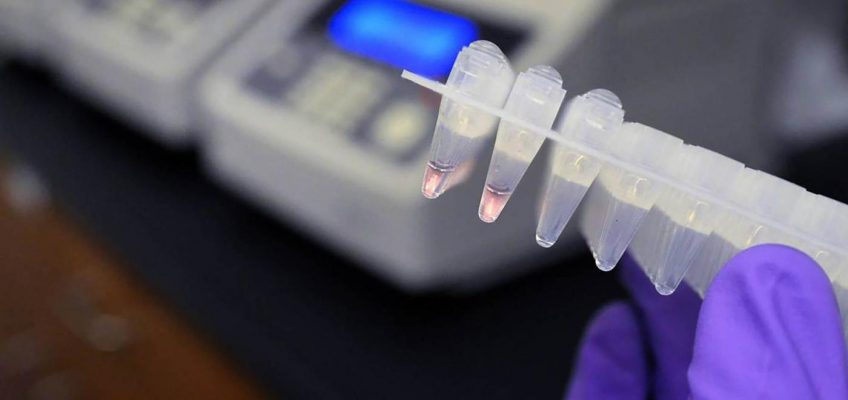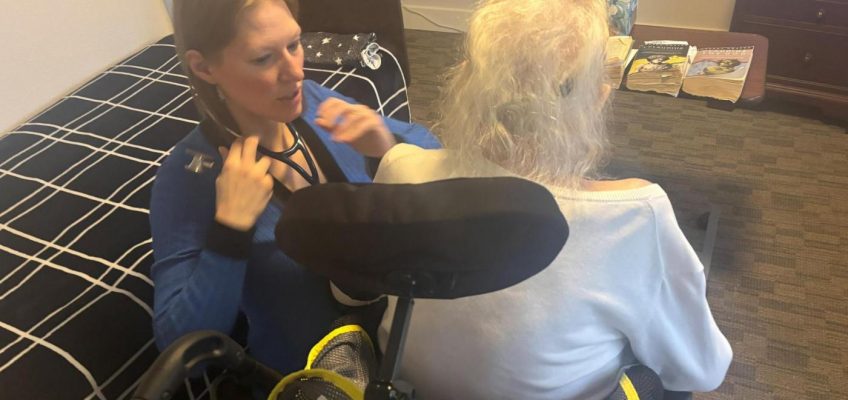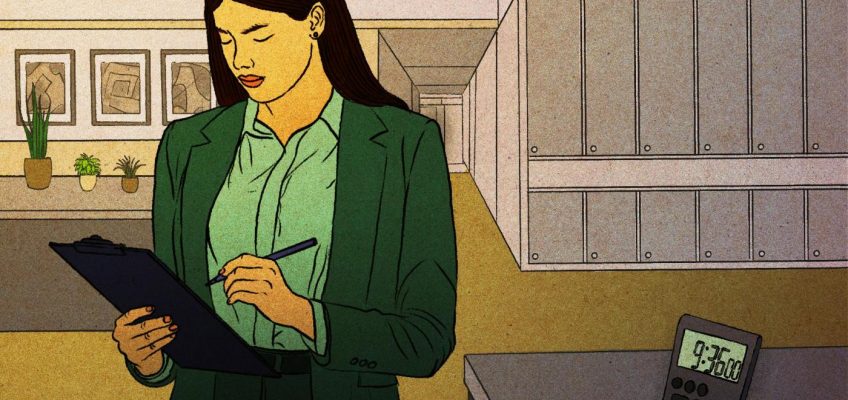By Amanda Hernández, Stateline.org
After years of pressure over lost or untested sexual assault kits, a growing number of states are adopting systems to track the kits — giving survivors a way to follow their evidence through the justice process.
Related Articles
Today in History: June 29, Apple releases the first iPhone to consumers
Today in History: June 28, Franz Ferdinand assassinated
Authorities arrest fugitive who police say posted on social media following New Orleans jailbreak
Europeans angry with Musk still aren’t buying his cars as Tesla sales drop for fifth month in a row
A US diocese defies trends and ordains its largest class of Catholic priests in decades
But despite nearly $400 million in federal support since 2015, backlogs persist, and some states still lack basic oversight. And now, advocates fear such financial support is on shaky ground.
There are an estimated 49,248 untested kits across the country, according to data collected by the Joyful Heart Foundation, a nonprofit advocacy group. Although the exact number of backlogged kits nationwide is unknown, a 2022 report from the nonpartisan Congressional Research Service that summarized existing research found backlog estimates ranging from 90,000 to 400,000 kits.
After a sexual assault, a survivor may choose to undergo a forensic exam, during which a trained health care professional collects evidence over the course of several hours.
That evidence — which may include clothing, photos of injuries, blood, urine and DNA samples — is compiled into what’s commonly known as a rape kit or sexual assault kit. The kit is then sent to a crime lab for further testing.
Test results are sometimes returned to investigators who check for DNA matches in national or state databases. A match could connect the case to other sexual assaults or link a suspect to another crime.
But processing a single kit can take days, months or even years, depending on when they are submitted and how much other work crime labs have. In some states, there are no laws requiring law enforcement to send rape kits to a lab within a specific time frame or mandating how quickly those kits must be tested.
Survivors are often left in the dark. They may not know if their kit was tested, whether a suspect was identified, or if their case is moving forward.
That silence — the uncertainty about what happened to the kit — has long been the norm in many parts of the country.
“We have betrayed at least a generation of survivors in the way that the criminal justice system and the larger public have responded to sexual assault,” said Rachel Lovell, an associate professor of criminology and the director of the Criminology Research Center at Cleveland State University. Lovell has conducted extensive research on the impact of untested rape kits in Ohio.
The goal of tracking systems is straightforward: bring transparency to a process that for decades left survivors without answers. These systems allow victims to log in and track the status of their kits — from collection to testing to storage — and offer law enforcement agencies a tool to identify and prevent testing backlogs, and strengthen criminal investigations.
At least 37 states and Washington, D.C., have established or committed to establishing a rape kit tracking system, according to the End the Backlog website run by the Joyful Heart Foundation. The foundation supports survivors of sexual assault, domestic violence and child abuse.
Two more states — New Jersey and Pennsylvania — announced plans this year to build their own tracking systems. In New Jersey, a new law gives the attorney general’s office until Aug. 1 to set up the tracking system. Pennsylvania officials are preparing to launch a statewide inventory of kits to better understand the scope of the backlog before developing their system.
A handful of other states have also enacted or are considering legislation to support their sexual assault kit tracking programs.
In Arizona, for example, Democratic Gov. Katie Hobbs signed a bill into law in May requiring all police departments in the state to use a system called “Track-Kit.” The new law primarily affects the Phoenix Police Department, which opted out of using the system in 2016. That department is expected to launch the platform later this year.
At the federal level, support for kit testing and tracking has often come from the National Sexual Assault Kit Initiative, or SAKI, which has awarded nearly $400 million to 96 grantees, including local and state agencies, across 44 states since 2015.
But the program’s future has not always been certain.
In January, the federal Office of Management and Budget had listed the National Sexual Assault Kit Initiative as a program whose funding would be frozen, before walking back the widespread freeze amid legal challenges.
President Donald Trump’s proposed budget for fiscal year 2026 would maintain funding for the Sexual Assault Kit Initiative at $51.5 million, according to a new report from the nonpartisan think tank Council on Criminal Justice.
But a separate round of federal Department of Justice grant cuts in April has raised concerns about the stability of broader support services for survivors. That round of cuts affected a variety of grant programs, including domestic violence shelters, trauma counseling, legal assistance and hospital advocacy.
The timing is especially concerning, advocates say, as victims of crime face growing obstacles to accessing state-provided support. In many states, victims seeking financial compensation encounter long delays, burdensome paperwork or are disqualified entirely by narrow eligibility rules.
Police investigations and funding
In jurisdictions that have worked to clear their backlogs, testing sexual assault kits has helped identify serial offenders, solve cold cases and connect assaults or other crimes to the same perpetrator.
Nationwide, testing supported by the federal Sexual Assault Kit Initiative has contributed to at least 1,538 convictions. Still, these types of crimes are vastly underreported to police.
Rapes and sexual assaults are notoriously difficult to investigate and prosecute, said Lovell, of Cleveland State University. But testing all rape kits can reveal patterns of criminal behavior over time and provide deeper insight into how, when and to whom these crimes are happening — ultimately helping improve support and case outcomes for survivors.
“By prosecuting sex offenders, you can also work to address violent crime more generally and solve past or future crimes with the addition of evidence and DNA,” Lovell told Stateline.
In her research on untested rape kits in Ohio, Lovell has found that since 2015 — when the Sexual Assault Kit Initiative launched — cases overseen by the Cleveland Police Department have been more likely to move forward in the investigative and prosecutorial process, with fewer being labeled as unfounded. Police reports, she said, also have become more detailed and trauma informed.
The initiative itself may not be the sole reason for these changes, Lovell said. Other factors, such as departmental policy changes or officer training, may also have played a role.
Although SAKI grants remain one of the primary sources of support for testing backlogged kits and building tracking systems, communities may face challenges sustaining progress once the federal dollars run out.
Capt. Tim Hegarty, division commander of the Office of Professional Standards at the Glynn County Police Department in Georgia, said local agencies must push through potential funding cuts.
“It falls back on agencies to do the job that they say they’re going to do, even when the money has dried up,” Hegarty said in an interview. “Doesn’t matter who’s in the (presidential) administration.”
Hegarty added that many departments across the country are still catching up when it comes to interviewing victims with sensitivity and investigating sex crimes.
“Law enforcement really has not advanced a great deal when it comes to dealing with these types of crimes,” Hegarty said. “It’s not the universal language when it comes to policing across the country.”
New statewide tracking systems
Other states are looking to strengthen existing programs through new oversight measures and stricter processing timelines.
Maine is one of the 11 states without a statewide rape kit tracking system. But state lawmakers are considering a bill that would create one and require law enforcement agencies and the state’s crime lab to inventory and test backlogged kits. The bill passed the House in mid-June and is currently under consideration by the Senate Appropriations Committee.
In Colorado, Democratic Gov. Jared Polis signed a bill in early June aimed at improving the state’s capacity to process sexual assault kits. The new law establishes the Colorado Sexual Assault Forensic Medical Evidence Review Board, which will evaluate the state’s medical, legal and criminal responses to sexual assault.
The governor and attorney general have until Aug. 1 to appoint board members. A preliminary report is due to lawmakers by Dec. 15.
The law also strengthens oversight of kit processing timelines. Law enforcement agencies must now provide survivors with updates on the status of their kits every 90 days. It also sets a new 60-day goal for crime labs to process forensic medical evidence, shortening the current 90-day goal.
As of May 31, 1,324 kits were backlogged, with an estimated testing turnaround time of about a year and a half, according to the state’s dashboard.
Alaska, which launched its statewide rape kit tracking system in 2023, considered a bill this year that would have expedited processing timelines for sexual assault kits. The bill passed the House without opposition but failed to advance through the Senate before the legislative session ended in May.
Although the number of untested kits has significantly declined since the state began inventorying them in 2017, 254 kits remained untested at the state’s crime lab in 2024 — up from 113 the previous year but well below the 3,484 recorded in 2017.
In Georgia, lawmakers considered a similar bill that would have established new rules for collecting, testing and tracking evidence from sexual assault kits. The bill did not advance before the legislature adjourned in April.
The Georgia Bureau of Investigation reported in December that 2,298 kits were tested between July 2023 and June 2024, with 480 kits still awaiting testing. Another 1,612 older cases submitted before 1999 were flagged for DNA testing, of which 837 had been tested as of June 2024.
©2025 States Newsroom. Visit at stateline.org. Distributed by Tribune Content Agency, LLC.




